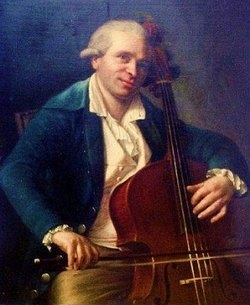
Jean-Louis Duport (4 oktober 1749 - 7 september 1819), ook wel bekend als Duport de Jonge om hem te onderscheiden van zijn oudere broer (en leraar) Jean-Pierre (1741-1818), was een cellist en componist. Hij is vandaag misschien het best bekend om zijn 21 etudes voor cello solo die het laatste deel vormen van de "Essai sur le doigté du violoncelle et sur la conduite de l'archet" ("Essay over de vingerzetting van de cello en over het gedrag van de boog") (1806), een baanbrekend werk van cellotechniek.
Hij schreef ook zes celloconcerten. In 1812 keerde Jean-Louis terug naar Parijs, waar hij Napoleon ontmoette, die erop stond Duports Stradivarius-cello uit te proberen en uitriep: "Hoe houdt u dit ding in godsnaam vast, mijnheer Duport?" Duport was zo duidelijk bang dat Napoleon het zou beschadigen, dat Napoleon het lachend teruggaf aan de voorzichtigere handen van de cellist. Eigenlijk had Napoleon een klein deukje in de ribben van de cello gemaakt, wat nog te zien is aan het instrument. Het werd later eigendom van Auguste Franchomme en ook van Mstislav Rostropovich.
Jean-Louis Duport (4 October 1749 – 7 September 1819), sometimes known as Duport the Younger to distinguish him from his older brother (and teacher) Jean-Pierre (1741-1818), was a cellist and composer. He is perhaps best known today for his 21 études for solo cello that constitute the final part of the "Essai sur le doigté du violoncelle et sur la conduite de l'archet" ("Essay on the fingering of the violoncello and on the conduct of the bow") (1806), a seminal work of cello technique.
He also wrote six cello concertos. In 1812, Jean-Louis returned to Paris, where he encountered Napoleon, who insisted on trying out Duport's Stradivarius cello, exclaiming, "How the devil do you hold this thing, Monsieur Duport?" Duport was so obviously afraid that Napoleon would damage it, that Napoleon laughingly returned it to the cellist's more careful hands. Actually, Napoleon had made a small dent in the ribs of the cello, which may still be seen in the instrument. It was later owned by Auguste Franchomme and also Mstislav Rostropovich.
Source Wiki